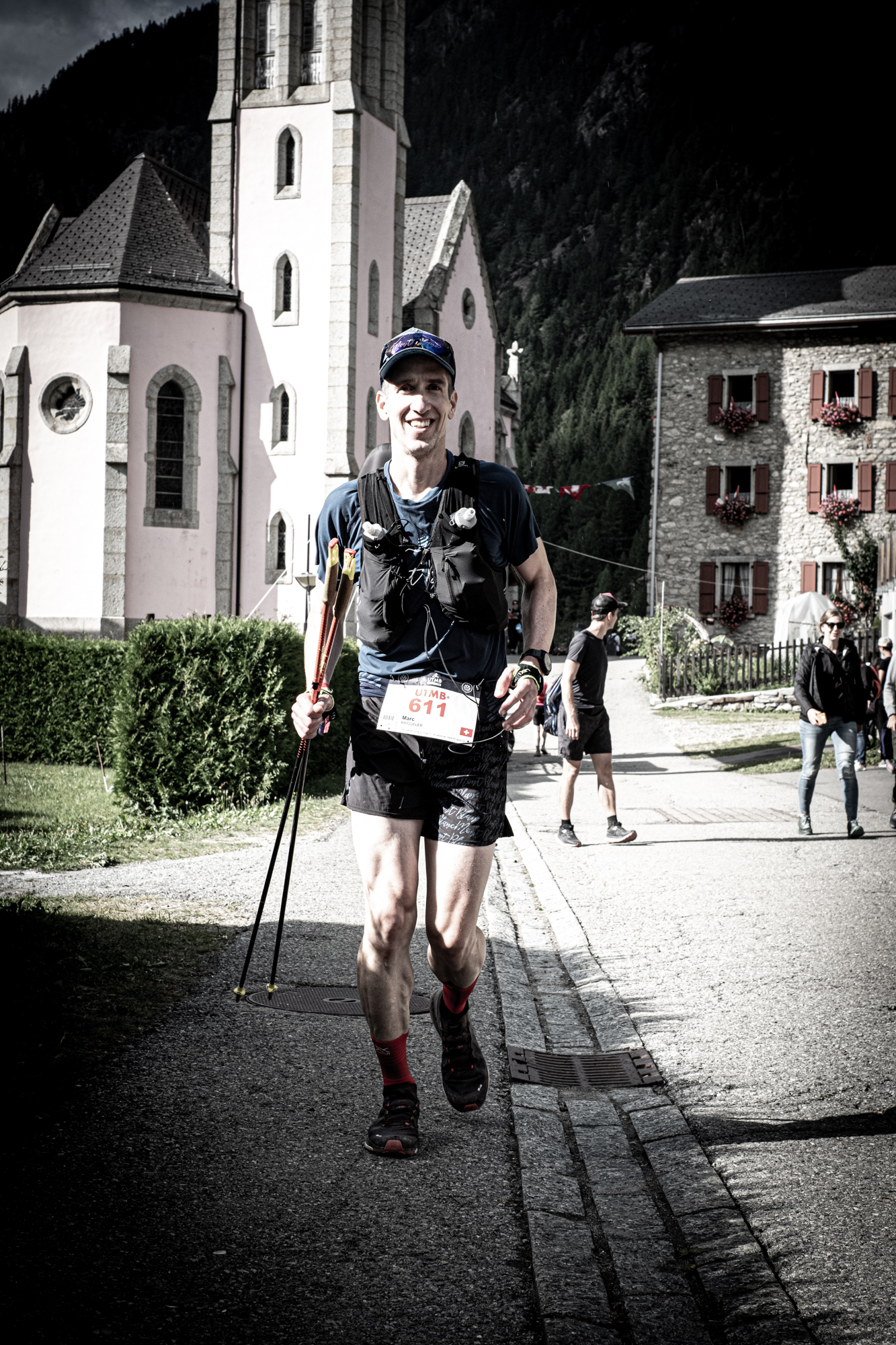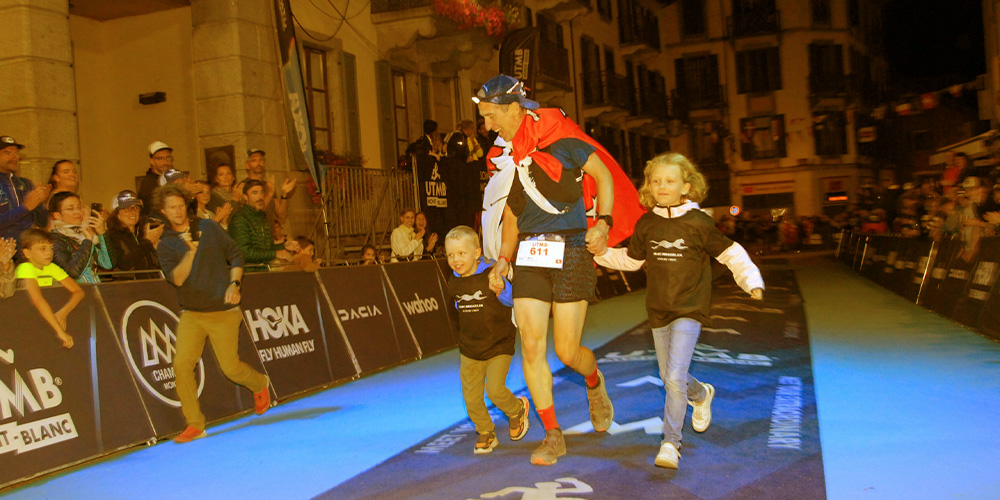3 countries, 170km, +10,000 metres of positive height gain: the Ultratrail Mont-Blanc is a gruelling challenge, physically but also emotionally. This is explained to us in an interview by Marc Briggeler, an ultratrail athlete from the canton of Valais, who, following the running.COACH training plan, crossed the finish line in less than 30 hours on his first attempt!
1. Name, surname, age, origin
Marc Briggeler, 38 years old, born in Visp (Valais/Switzerland).
2. How long have you been running?
I’ve been running for 14 years. In the first 5 years I only ran occasionally, in the last 10 years I have run seriously as an amateur athlete and now compete regularly. I used to alternate between running and ski mountaineering competitions (e.g. Patrouille des Glaciers or Trofeo Mezzalama), but in the last 3 years I focused on running, as it was impossible to combine both sports with my private life. I completed my first ultra-trail in 2014, and since then I have run 16.

3. Since when have you subscribed to running.COACH?
I first subscribed to running.COACH in 2016 and have been using the plan regularly ever since.
4. Did you prepare for the UTMB through running.COACH? How important was the support from running.COACH in reaching your goal?
Yes, I created my training plan on running.COACH, participating in all the planned preparation races and having the Ultra Trail du Montblanc set as my target race. running.COACH gave me the necessary guidance on how to train, is really easy to use and brings variety to the training routine. I am convinced that targeted training with running.COACH for 3+ months has a positive effect on a runner’s form. In my case, running.COACH played a key role in my participation in the UTMB 2022.
5. How did you adapt your running.COACH training in the context of an ultra trail?
I knew that running.COACH would only set the training goals until the marathon race/goal.
This is how I adapted the plan:
- Intervals and tempo runs were done as planned, sometimes extending the run by 20-30 minutes.
- Short endurance runs were maintained, but done off-road and lengthened sometimes by 15-30%.
- For the long runs, I reduced the pace target and lengthened the time target by about 30%.
- The long training sessions were carried out in the backcountry, and I continually increased the altitude metres until I reached about 3000 HM per session approximately 1 month before the race.
- I followed the guidelines for tapering and recovery before and after the preparation races.
My longest training for the UTMB lasted about 10 hours (48 km/3000HM). When running off-road you have to pay attention to heart rate goals and not to pace goals. Also, in addition to endurance training, it is important to do regular stretching, strength and core training.
6. Now let’s talk about the race, what does the UTMB qualification process consist of?
Until recently, in order to qualify for the UTMB you needed to have completed 2-3 races in the last two or three years, of 100KM and 6000HM, in order to earn the necessary points that allow you to participate in the draw for a starting place. However, the system and requirements have changed from year to year: today you can earn qualifying points (or so-called ‘Runningstones’) at UTMB World & Major Series events by finishing races in the corresponding ultra category (50K, 100K, 100M). The more runningstones you have, the better your chances of being selected for a starting place at the coveted UTMB.
7. How many months have you spent preparing for the UTMB?
At the end of January 2022, to my surprise, I received the starting place for the UTMB. So I had exactly seven months to prepare. As I have been less active in the last two years due to the pandemic, I had to go from 5-7 hours of training per week to 10-12.
8. What were the greatest difficulties in the UTMB preparation?
Combining 100% work, family (I have two children, 5 and 7 years old) and training was the biggest challenge. All of this requires serious planning and understanding from your wife and your employer.
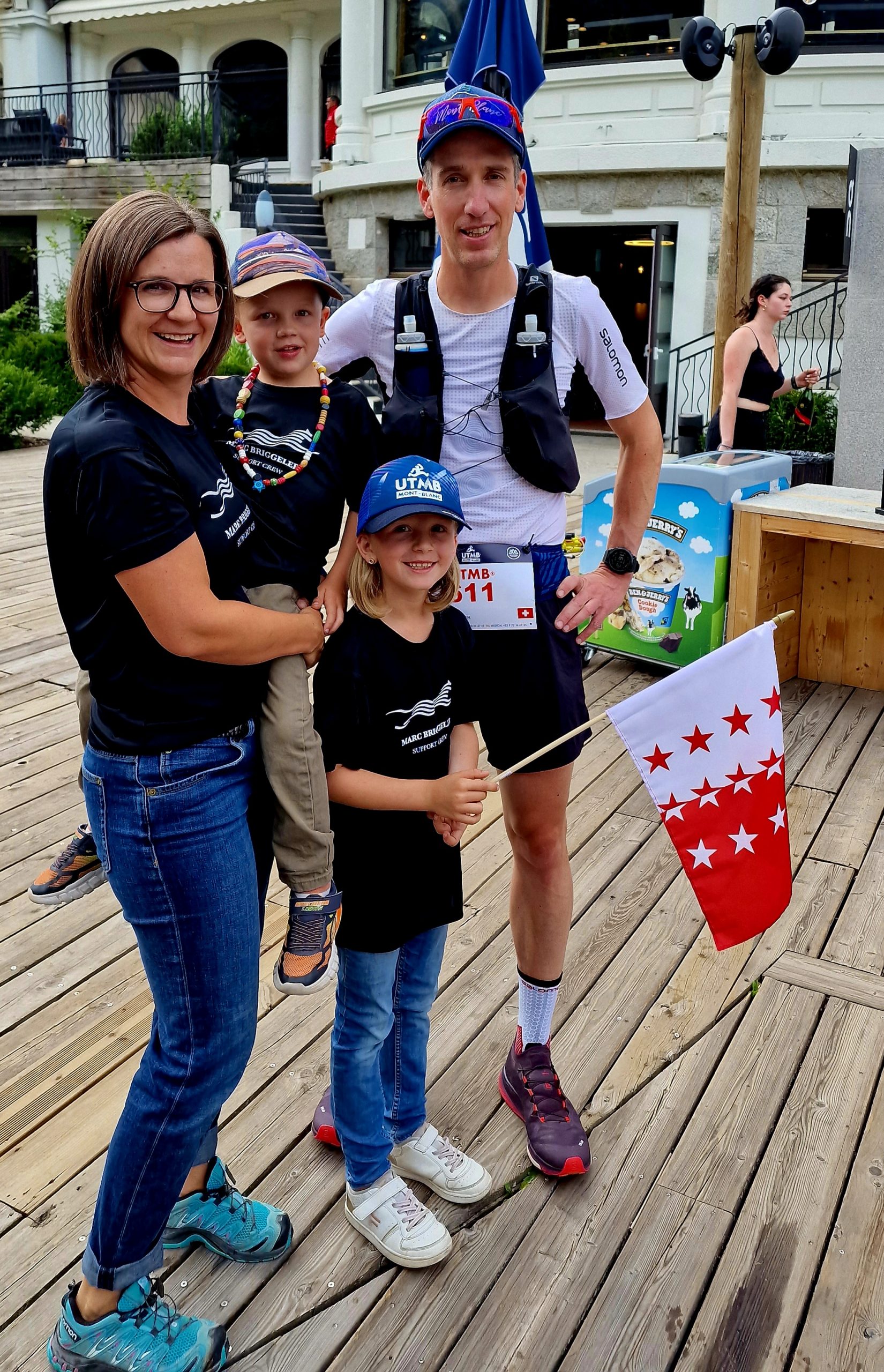
9. So how did you manage to combine training-work-family?
My family supported me 100% in my plans, giving me the necessary time for preparation races or longer training sessions. Everyone knew for several years that participating in the UTMB was my biggest sporting goal in life.
Being an early riser, I used to train a lot from 5 to 9 a.m. or during my lunch break on working days. Also, on weekends I always went out early in the morning so that I could spend more time with my family during the day.
10. Did you prepare the race with a team or on your own?
Basically I prepared the race alone, but I had partners who accompanied me on about 20% of my training. I like running alone, listening to music. But I also get great pleasure when I can share the training experience with someone.
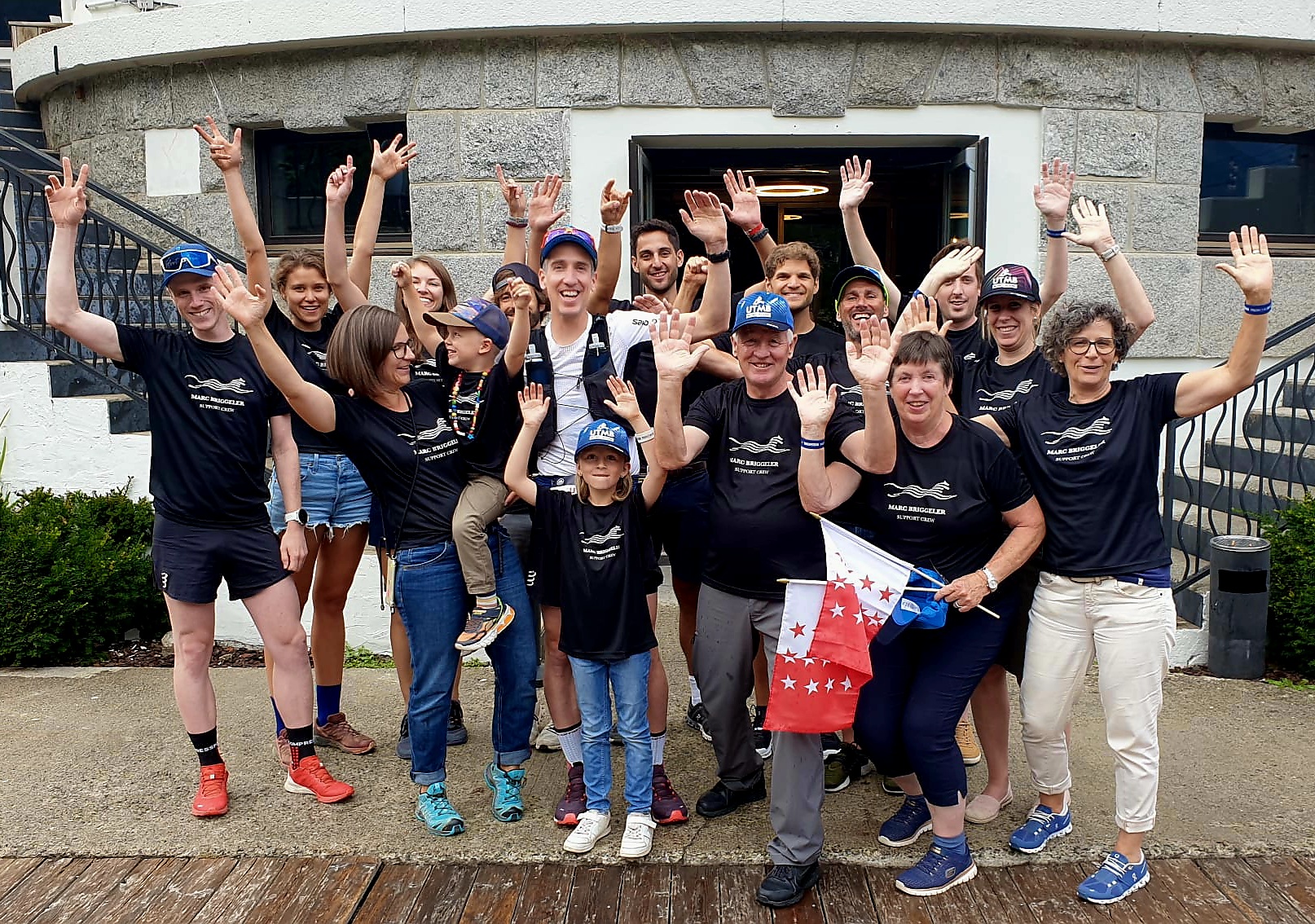
11. Day x has arrived, you are at the starting line: what are the emotions that strike you and the best memories of that moment?
Since 2015, I have dreamed of standing at the start line of the UTMB and tackling the great tour of Mont Blanc. Over the last seven months, I have prepared intensively for this moment. When I presented myself at the start line, I got excited. There was a lot of joy, tension and respect. The last five minutes I had tears in my eyes when the runners were introduced with special music.
When ‘Conquest of paradise’ was played just before the start, there was this incredible moment… goose bumps, the body was trembling… a feeling that can hardly be described, but that you simply have to experience in person. Everything you have given up for the past few months comes together in a moment. I still get goosebumps when I think back on it all.
12. What was the atmosphere like with the spectators and your fellow competitors?
The public in Chamonix and at the UTMB is unique. You can only find this atmosphere in Chamonix. The first kilometres were incredible, with thousands of spectators cheering you on and wishing you success. Even the first 3-4 hours, in which you pass through three larger villages, were magnificent. Along the route I saw many enthusiastic spectators cheering for you. You could literally feel the respect being paid to you. There is an atmosphere that you usually only know from pictures of cyclists in the Tour de France.
The fact that you can experience that as an amateur athlete is wonderful. I also enjoyed the camaraderie with my fellow racers. There was no fighting, etc. During the race, temporary friendships developed, people helped each other, wished each other the best during overtaking, etc. This is certainly a special characteristic of ultrarunners: you don’t run against each other, but with each other, and everyone wishes for their opponents to reach the finish line.
13. During the race, did you have a particular strategy to manage the 170 km?
I divided the race into five stages, it was also a psychological technique. The five ‘checkpoints’ were always refreshment points where I could count on external help from my colleagues and my family. Knowing that there was always someone waiting for me at the 5 refreshment points was a huge mental advantage. In addition, many family members and colleagues, especially in the second half of the race, loudly supported me with cowbells and flags from my home canton of Valais. It was an incredible boost.
A key factor in the race strategy was a calm start and continuous intake of fluids and food. I wanted to dose the race downhill and the goal was to get through the first night well and still feel fresh in Courmayeur, after 80km/4500HM.
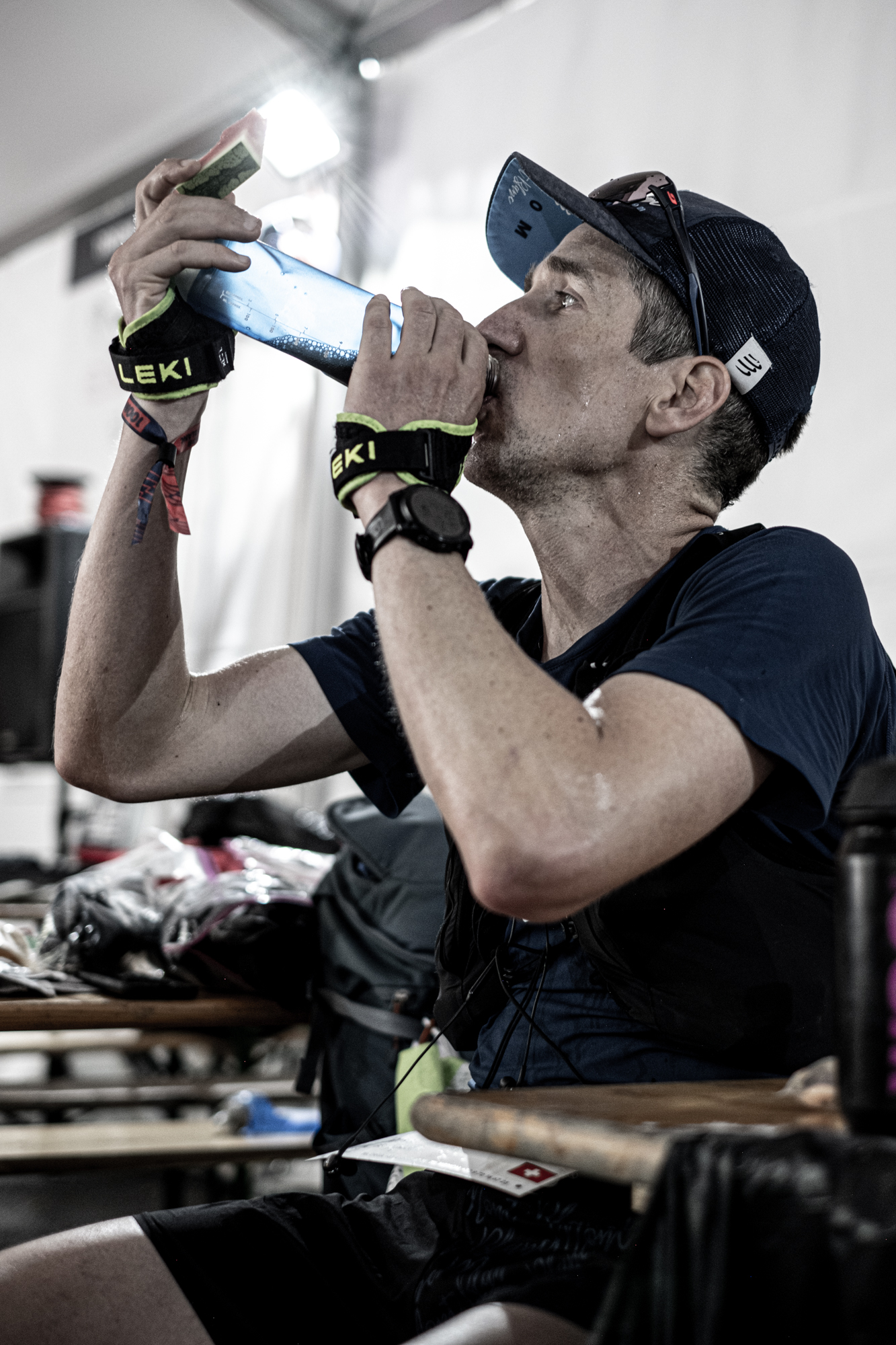
14. When did you encounter your first difficulties and what did they consist of?
Unfortunately, my first difficulties came relatively early in the race. After 5-6h (around 23-24h on Friday) I had stomach cramps and felt quite sick when I tried to feed myself with bars and drinks. During the night I could not eat and therefore had to change my food plan during the race. There was no plan any more, I ate and drank what I felt like. In addition, I soon started consuming sugary drinks such as cola, which I actually wanted to avoid. Physically I felt fine, but the stomach problems only disappeared in the early hours of the morning. Fortunately, at the beginning of the day, my stomach calmed down and I no longer had to deal with this problem.
15. Did you have cramps during the race?
Fortunately I never had any muscle cramps during the race. Of course after about 100km/6000HM my muscles started to hurt on the descent. Especially after the change of pace from uphill to downhill. I noticed that running faster downhill hurts less than running slowly, but you have to overcome this ‘pain’ for 5-10min in the first few metres downhill and then it gets better again.
16. Have you had moments when you thought about giving up?
Giving up was never an option for me. The first night because of stomach problems I started to have doubts. Basically I was fine, but I was taking in so little nutrition in the first 12 hours that I thought I would lack energy during the day. Nevertheless, I managed to recover well and invested a lot of time in feeding myself optimally and taking in the necessary energy. The so-called ‘wall’ never came and motivation was always high.
After 20 hours of running, I realised that if I continued like this, I could finish in less than 30 hours, as long as I didn’t have any slumps. This motivated me even more to give it my all in the last 8-10 hours. Now I can say that the last third of the race went very well and I was able to recover several positions.
17. How did you feel when you crossed the finish line?
From a sporting point of view, it was the best moment of my life. When I crossed the finish line in Chamonix, I felt incredible emotion and happiness. At 300 metres from the finish line, my teammates greeted me, we hugged each other with joy and I almost forgot to run towards the finish line. Despite the late hour, I managed to cross the finish line hand in hand with my two children at 22.50. After their birth and my marriage, this was definitely the best moment of my life.

18. Did you have any time goals?
Since this was my first race over 100 km/16h, I didn’t want to set a fixed time goal. I always said that 30-35 hours was the ideal goal. Basically, I just wanted to finish. At the second attempt you can be more precise or set a desired time. But an ultratrail of over 100 km is almost too complex to be able to set a target time.
The dream was certainly the 30-hour limit, but I did not expect to reach it on the first attempt. With my time of 28:48:11, I completely exceeded my expectations and goals. This makes me even more proud and happy.
19. How was the post-race recovery?
I told myself that I would give myself three or four weeks of rest and recovery. Surprisingly, the muscle soreness was almost completely gone after the third day. But I felt the basic tiredness in my body for 2-3 weeks.
4 weeks later I felt completely healed. What surprised me was that I needed almost two weeks to mentally process the race and all the experiences I had. Especially the first few days after the race, I was constantly thinking about the UTMB.
20. Do you have other goals for the future?
Yes, I already have plans for 2023. First of all, I want to improve my time in the marathon (I ran my first flat marathon in Zurich in April 2022 in 2:48:40). Place and date are already set, Paris Marathon on 2 April 2023.
On the one hand, I have developed an incredible enjoyment of running on roads and flat terrain this year, on the other hand, as a trail runner, I prefer running on trails and in nature. For summer 2023, I am planning the Lavaredo Ultratrail in Cortina (120km/5800HM) in June and the Swissalps100 in Valais (160km/10000HM) in August. So the 2023 season will be equally interesting, and running.COACH will still be my faithful companion!
21. Would you recommend running.COACH to other runners and why?
Yes, I highly recommend it to everyone. It is very easy to set up and can be adapted quickly. running.COACH brings the necessary variety to your daily training routine and is very effective if you follow it consistently. After only 3 months of training with running.COACH, you can already feel a great increase in physical shape. If you want to invest time in training, you should do so with quality rather than quantity. With running.COACH you are well served.
And it’s always adaptable, whether it’s your goals, your personal performance level, training days, adding and dropping races, etc., running.COACH will always calculate a new plan for you. I will continue to train with running.COACH in the future, because with specific adjustments and additions the training plan can also be used for ultratrail running!
Strava profile
Instagram account @marcbriggeler
Many thanks to Marc Briggeler for his testimonial, and congratulations again on an incredible performance!
